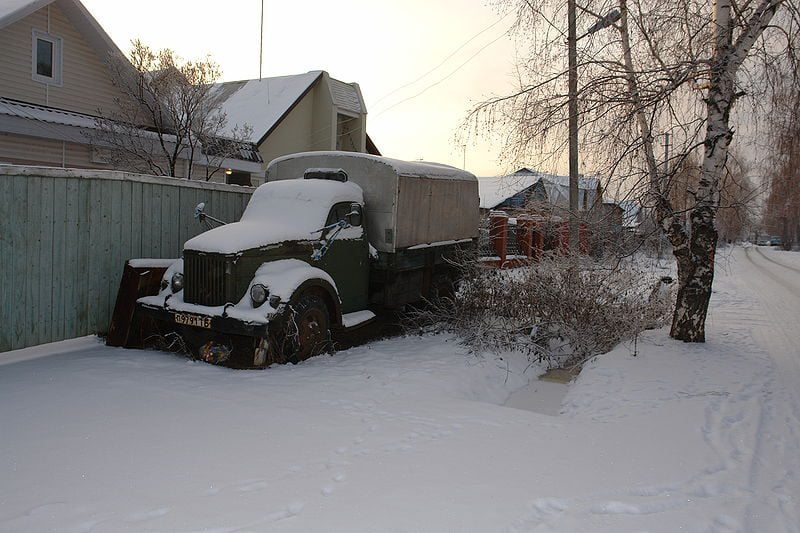Moving in Boston can be difficult. So can moving in the winter. But moving in Boston’s Winter? That can be daunting on an entirely different level.
Moving in the winter requires all the same preparation as any other move — and then some. A wintertime move is often a great way to save money on your relocation. But to move from your old home to your new one efficiently and safely, remember to follow these steps to snow-proof your moving day:
1. Make sure all paths are safe and clear.
Most reputable movers (such as us) carry workman’s compensation, as well as cargo, general liability, and commercial auto insurance. However, it is incredibly rare for any of these policies to cover property damage or injury incurred while shoveling snow. (Our workman’s comp, for example, expressly prohibits snow removal.)
Each and every path your movers will use should to be free of snow, ice, or other potential hazards. This is true for all locations the move is going to take place. Have a large appliance that needs to come out of the bulkhead? Make sure to clear a path from the basement exit all the way to where the movers will park the truck. Any ground over which your belongings will be carried to or from the truck should be safe and unobstructed.
Granted, with such unpredictable weather in this part of the country, it’s not always easy to plan for the next snowstorm, especially if you’ve recently had an injury or live alone and have a lot of ground to shovel, snow-blow, and salt.
That’s why it’s good to have a snow removal service on hand in case you need last-minute help clearing all the pathways. If you don’t know a reliable snow removal service, try asking your local police department, hospital, or large box store (think Best Buy or Target) which company they use to clear their lots. Chances are they won’t send you to anyone unreliable.
2. Speaking of the truck, it’s important that it has a safe and legal parking space at all locations of your move.
Just because you have a long driveway doesn’t necessary mean it can accommodate a moving truck. Whether you have a sprawling single family home in Wellesley or Westwood, or you’re moving from an apartment building in Somerville or the North End, a steep driveway is going to be difficult for a truck to climb. (This is especially true during the winter, when inclines can be extra slippery.)

It’s always necessary that there is a clear and safe spot for your movers to park. (Photo: Виктор Перфилов at ru.wikipedia [CC BY 3.0], from Wikimedia Commons)
Winter in New England is anything but predictable. Naturally, in a state of emergency, or during a period when your city or town requires all vehicles removed from the street, all bets are off. Permits become no longer valid and your movers may have to postpone your move.
Which is why it’s important to . . .
3. Be Flexible!
If you know that there’s a strong chance of weather affecting your move, be in touch with your movers about potential dates to reschedule. Moving trucks are not considered emergency vehicles, so during a weather emergency, they can’t be on the roads. Provide as many options as you can to your movers. And communicate with them ahead of your move. This will better your chances are of making sure the weather doesn’t interrupt your plans, despite moving in the winter.

It’s very important to be flexible when moving in the wintertime. (Photo by Chad Riley (chad050) from West Seattle, WA, US (Flickr) [CC BY-SA 2.0], via Wikimedia Commons)
4. Get LIT!
Moving in the winter weather can make your move a longer process than normal. And daylight hours are harder to come by. Turn on any and all exterior lights. Moving heavy items in the dark is difficult and dangerous no matter the time of year, but it can be especially dangerous when the paths are slippery and wet. Check that all exterior lights have working bulbs, and replace those that don’t prior to your moving date.

“Lit” is also the French word for “bed.” Want to speed up your wintertime move by taking your bed apart before the movers arrive? Read our guide to moving beds. (Photo by MOREAU Henri (owm) [GFDL or CC BY-SA 4.0-3.0-2.5-2.0-1.0], via Wikimedia Commons)
5. Stay Hydrated!
If you’re doing an intense physical activity like moving, you need to drink plenty of fluids. It’s true that cold weather diminishes the body’s natural thirst response. And winter weather actually increases the risk of dehydration. So have plenty of water on hand the day. Hot cocoa can also be a great touch.
6. Get on the Floor!
With melting snow, salt, and mud on the ground, you or your movers can track a mess on your brand new carpet. For safety reasons, movers can’t take their shoes off on the job. (Also imagine how many hours it would add to your move if they removed and then laced up their winter boots for every entrance and exit!)
So the next best thing is to layer the most heavily trafficked walking paths throughout your house. Vinyl runners or heavy paper, both of which you can find at most hardware or moving supply stores, are great for this. Just remember, however, when protecting stairs, to securely fold and tape down the paper. Any loose or easily moveable item on a wet staircase just increases your chances of a broken item or an injury claim — and that’s not a good Christmas gift for anybody.
7. Pack Cautiously.
This one’s fairly self-explanatory, but crucial nonetheless. With winter come the elements, and cardboard boxes are not as durable in the snow as they are in the sun. Moving in the winter can seriously test the strength of cardboard. So don’t overload boxes (they become weak when wet), and carefully protect all breakables with newspaper or packing paper. Additionally, ask to confirm that your movers will come prepared with all the necessary blankets to protect your larger furniture.
(For more on this, read our guide to packing book boxes and our list of where to pick up moving supplies.)
8. Dress for the Mess.
Just because you’ll be working up a sweat doesn’t mean you should be wearing shorts in January. Gloves and a hat are especially helpful in retaining precious body heat, and not exposing your extremities to injury.

Appropriate attire is key when moving among the elements. (Photo By Andrew Vargas from Clovis, United States [CC BY 2.0], via Wikimedia Commons)
9. Clean it all up.
As boxes and furniture come into your new place, give them each a once-over with a dry cloth or rag. Dispose of all wrapping and packing materials as soon as possible. This is key to keeping water and dirt from seeping into your new carpets or furniture. And you sure don’t want any of the ice-melt or salts used to clear walkways from seasoning your new home.
We can’t always control or predict the weather. However, if you follow these guidelines you’ll set yourself up for a success when moving in the winter.
Have some moving dates in mind this winter? Let us know today and we’ll send you a quote!

